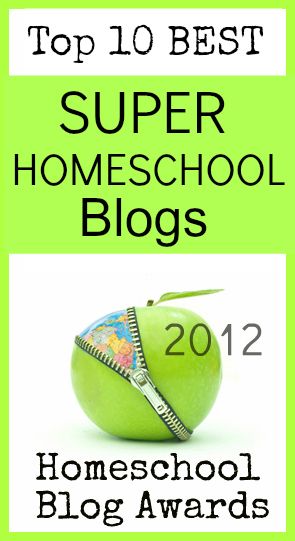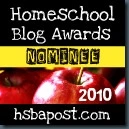If the name Sharon Watson sounds familiar – it may be from our joy of Power in Your Hands that we used for Writing with Nathan his Sophomore year. It was a part of a full year high school curriculum package from a trusted favorite homeschool company.
This year we start a new high school journey with Jon. Our focus this year is Literature. Not just reading books, but stepping it up, digging in, literature studies. So – during the summer, while practicing and playing three sports, I agreed to jump on board with Writing with Sharon Watson to review the new Illuminating Literature: When Worlds Collide – For Christian High Schools and Homeschools program.
- Illuminating Literature: When Worlds Collide (Student Book)
- Illuminating Literature: When Worlds Collide: Teacher’s Guide
- Illuminating Literature: When Worlds Collide: Quiz and Answer Manual
- Illuminating Literature: When Worlds Collide:Novel Notebook (Free PDF Download)
We also received two books, Pudd’nhead Wilson, by Mark Twain and The War of the Worlds, by H.G. Wells. The Teacher’s Guide suggests to use the exact book from Dover Press as the Student Guide will match the page numbers. Especially helpful in classroom settings.
One of the things I wanted out of this course, was for me, the teacher, to learn how to present a solid high school literature class. I started by reading the Teacher’s Guide. This is a very simple, specific, yet detailed book. If you are looking to host a literature co-op, this is the tool to help you succeed.
For Jon, we started him with the first Start Here Lesson in the Student Guide. This opens up the world of Literature, philosophy of the course, and a lot of the ‘why and what’ of the course. It asks him questions to get him thinking about what he has already read. I think it shows students that they can do it – they’ve been thinking about stories and books already. Lesson 3 proves that point, asking them questions about any novel, short story, play, TV show, movie or comic book they have experienced. Great questions with following rich conversations.
As we start to read the first book, it is good to note the question of why? Why did she pick the following?
- Pudd’nhead Wilson, by Mark Twain,
- The War of the Worlds by H. G. Wells,
- The Friendly Persuasion by Jessamyn West,
- Peter Pan by Sir James Barrie,
- Warriors Don’t Cry by Melba Pattillo Beals,
- A Tale of Two Cities By Charles Dickens,
- Fahrenheit 451 by Ray Bradbury, and
- The Screwtape Letters by C.S.Lewis
“The books in this year’s list were chosen because of their collisions – physical, political, extraterrestrial, racial, spiritual, and philosophical.” Conflicts is a major theme of the works. Seeing their worlds collide and “being aware of how the author resolves those conflicts.” (Quotes from the Student Book) We watch to see how the characters resolve these conflicts, and follow along with the protagonist as he struggles his way through the story. We also learn of the Antagonist – the person that keeps throwing off the planned course. As we found in Puddn’head Wilson, sometimes the two lines got blurred between who was the protagonist and who was the antagonist – sometimes it was the same person. Just like in life – when we are our own worst enemy.
Which brings me to why I want to study Literature, and Sharon Watson points this out – as we read these books, light will be cast on people struggling against their own self, another person, the community or society, nature, God/fate, or technology/biotechnology. Seeing these struggles triggers thoughts to our own daily challenges.
Entering into the Rhetoric Stage with High School – I appreciate all of the questions Sharon provides in the book. Thinking – specific – open ended – and direct to text.
Lesson 3 pulls us into the Author. Wow – we learned a lot about Mark Twain/Samuel Clemens. After three pages points about his life, we are asked to write two things we found interesting. I personally found it funny that Louisa May Alcott called his Huck Finn book trash. It made me giggle. Huck and her characters are as far apart as one can get. Talk about worlds colliding. Ha.
One thing I didn’t have Jon do – but should have – was to print out his Novel Notebook from the PDF before reading the book. We used paper, and marks in the student book. Since I’m a ‘Notebooker’, I should have paid attention to this resource. My mistake. We use the notebook to write down answers to questions in the student book. These questions don’t seem to have a right or wrong answer – but a thinking question. Ideas, things we like, examples, etc. I write our mistake so that you can make note of it on page 31 and be prepared before you read the book. We did it after, but it would have been good to have these on our mind before.
Finally – We read the book! Jon and I both read it, I wanted to make sure we were on the same page, and he is shy about sharing, so that way I’d have a zoomed in view for this review. For future texts, I’ll either order two, or read the next book while he reads the current selection.
After you’re done reading the text, there is a page to complete online quizzes and take an opinion survey. We did the Yes, I Read It, and Opinion survey, but he didn’t have interest in the Literary Term Quiz. The certificate of your passing/answers gets mailed to your email. If you have a class, these are really nicely formatted to print and present. Jon’s not that into it, but I thought it was cool. Moms. What do we know?
Next is a vocabulary “Quizzola”. A list of 20 words, that were all new to Jon.
Now that we have the meat of the text in our minds, we can move forward to the Literature questions. Colliding Worlds, Conflicts, brining it back to the Bible with the Curse of Ham, and Discussion Questions.
There are book selections given for those who liked the book.
Next – she gives us a list of activities – the student is to choose one. For this book, it is centered around the author and book. Painting, research, interviews, movies, essays, music, short stories, and timelines. I won’t give the specifics away – but each of the 11 ideas have a paragraph or two to help the student complete the activity. The range of creativity should have at least one spotlight that each student will be interested in.
In the end – of this month’s worth of high school literature – we came away with a bigger understanding of how to look at a simple classic book. From viewpoint of the former unschooler, relaxed, read a book, toss it aside, talk about it in the car learning family – the Teacher Manual and Student Manual looks a bit overwhelming with All of the Questions. Wowza. But now at the end of the first unit, the questions opened up ideas that we would have never asked each other. We learned so much about the author, that I didn’t even know through my previous studies. We learned about the character of man, and his decisions that came from the state of his heart and relationship to man and God. Historically we learned about a period of time that isn’t spoken of often and the trials of living as a white / black person. And it was worth it.
At the end of a review – folks want to know – not only what was in it, but how we actually liked it. Me, the teacher, enjoyed the whole process. Also me the student REALLY enjoyed the process. It was hard to get Jon to read the book each day. I liked that Sharon said we don’t really have to read it because we like it, but we just need to read it. After the book was finished, we liked the whole story.
This particular course, isn’t quite what we will use as a first step for getting Jon to read classic literature. However, the books listed above, are on my – I want him to read- list. I have a few Sea Adventure Non Fiction Classic books for him to read this fall. I think it will spark his desire to read for more than 20 minutes a day. I will – keep this set on our shelf for Sophomore or Junior year. The text is written to the student, easy to do each day on their own. I think by next year, he’ll be able to jump in and self direct the student book.
I did notice that she said – “This Year’s Theme is” when describing the When Worlds Collide. I’d assume, that means she’ll do more years. Catch Up With Writing With Sharon Watson on Facebook and Pinterest:
- Facebook: http://www.facebook.com/WritingWithSharonWatson
- Pinterest: http://pinterest.com/writingwithshar


















Pingback: Pebblekeeper’s Look at the Blue Ribbon Awards | Pebblekeeper
Hi, Angie! I love it that you read Pudd’nhead Wilson with your son while you were checking out Illuminating Literature! He may not thank you now, but eventually . . .
Thanks for your thoughtful review, and have a great year with your boys!